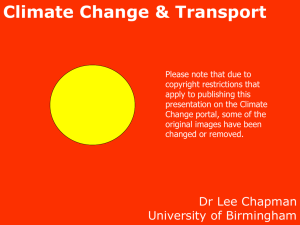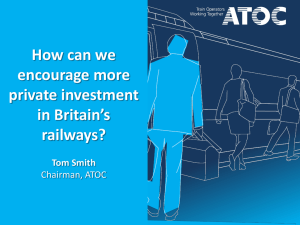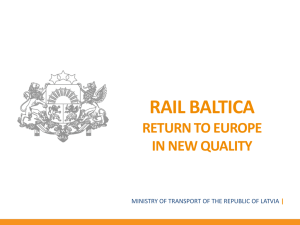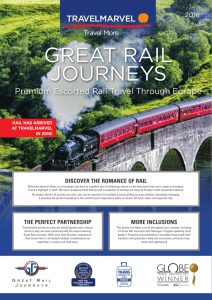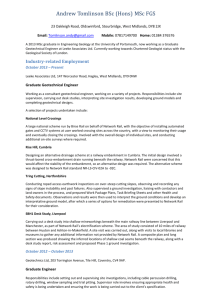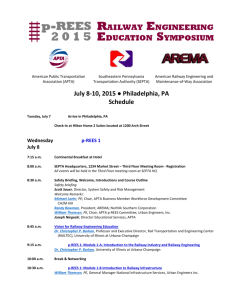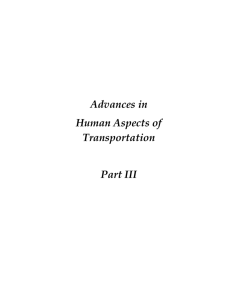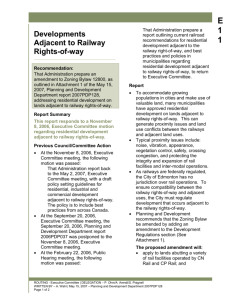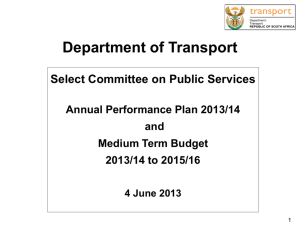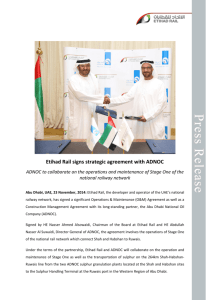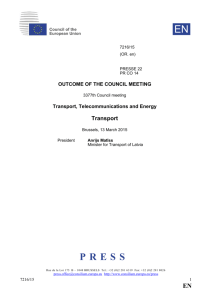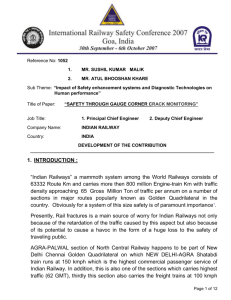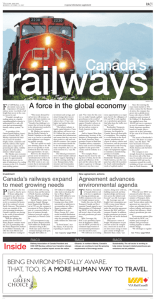October 19th 2011
advertisement
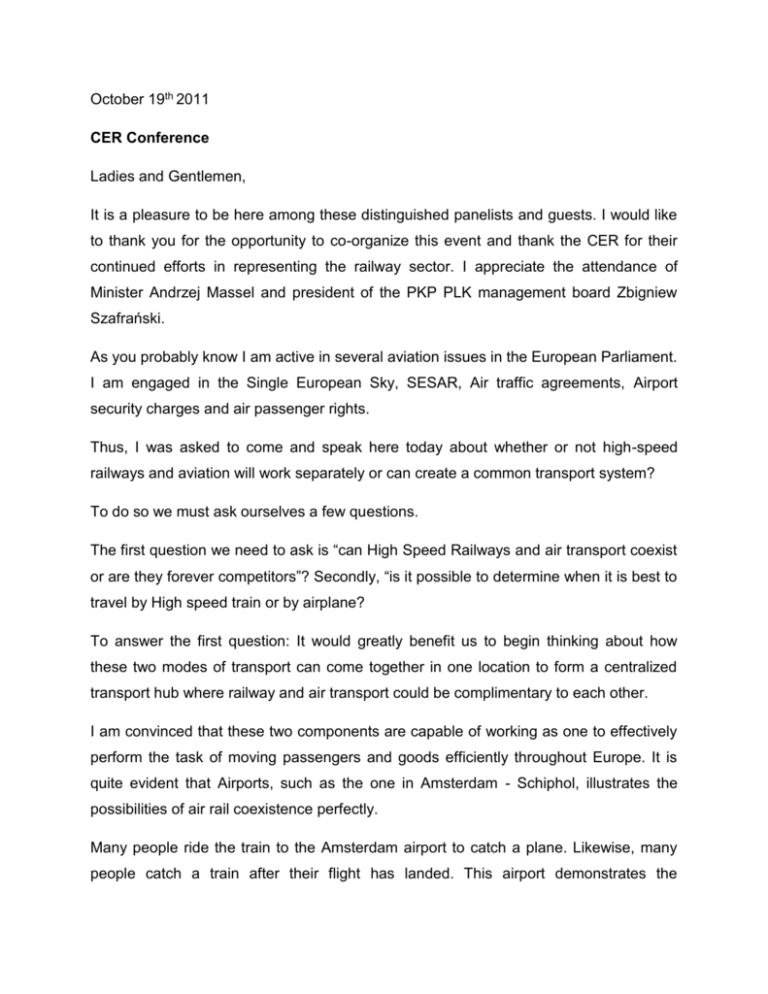
October 19th 2011 CER Conference Ladies and Gentlemen, It is a pleasure to be here among these distinguished panelists and guests. I would like to thank you for the opportunity to co-organize this event and thank the CER for their continued efforts in representing the railway sector. I appreciate the attendance of Minister Andrzej Massel and president of the PKP PLK management board Zbigniew Szafrański. As you probably know I am active in several aviation issues in the European Parliament. I am engaged in the Single European Sky, SESAR, Air traffic agreements, Airport security charges and air passenger rights. Thus, I was asked to come and speak here today about whether or not high-speed railways and aviation will work separately or can create a common transport system? To do so we must ask ourselves a few questions. The first question we need to ask is “can High Speed Railways and air transport coexist or are they forever competitors”? Secondly, “is it possible to determine when it is best to travel by High speed train or by airplane? To answer the first question: It would greatly benefit us to begin thinking about how these two modes of transport can come together in one location to form a centralized transport hub where railway and air transport could be complimentary to each other. I am convinced that these two components are capable of working as one to effectively perform the task of moving passengers and goods efficiently throughout Europe. It is quite evident that Airports, such as the one in Amsterdam - Schiphol, illustrates the possibilities of air rail coexistence perfectly. Many people ride the train to the Amsterdam airport to catch a plane. Likewise, many people catch a train after their flight has landed. This airport demonstrates the effectiveness of transportation balance very well. I liken this idea to that of a bicycle wheel, where every hub needs to have its spokes. In our example the role of the spokes acts as the access ways for high speed trains. I am confident that the balance between these two methods of transport is what will propel the future of transportation in the EU. A few days ago, when I was travelling through Europe my plane was seriously delayed. On the Internet I could not find any alternatives to assist me in reaching my final destination. At that moment I started to think about putting together two timetables - utilizing planes and high speed rail. In the future it would allow for not only the customer to find the most efficient connections but also give the passengers the opportunity to book and pay for the total combined ticket. My second question was how to determine when it is best to travel by High speed train or by airplane? In my opinion air transport is, and will remain, an important part of the European transport spectrum. Aviation allows EU citizens yet another option for travel that perhaps may be more suitable for traveling further distances. Some experts consider that the 800Km mark is the actual point that it is more advantageous to take high speed rail rather than an airplane. We tend to travel by train when it is of a short distance like that of London to Brussels, because we can save time by not having to travel to airports which are located outside of cities, where as train stations are mostly in the city centers. Also we save time by avoiding the check-in counter, security control, and luggage drop-off etc. On the other hand there are some areas in Europe where because of the terrain it will not be possible to construct the high speed rail network. Hence the position of the air carriers will remain unchanged in these regions. In my opinion, a combination of rail and air, along with other modes of transport, can make for a well-organized transportation system that will exceed environmental expectations, as well as lend the opportunity to meet the needs of EU citizens. Last year we witnessed how the balance between rail and aviation has its advantages in times of emergency or natural disasters. We all remember the Kaos that ensued following the eruption of the volcano in Iceland. In fact, I am willing to bet that many of us in this room were faced with the task of trying to get somewhere and we couldn’t. I agree with many of my colleagues in the European Parliament that we have to have an alternative mode of transport which protects us form the paralysis we experienced last year. The natural alternative in such a situation is of course high speed railways. It is very interesting with what is happening in Poland these days. We are currently working toward the implementation of the “Y” Shaped High Speed system and are greatly anticipating the day when that system will connect with the rest of the EU high speed rails. In this context I am very interested in how the “Y” shaped High Speed system will affect the development of the centrally located airport in Lodz. As members of the TRAN Committee, I can say that we have made great strides in implementing policies that have, and will, vastly improve the high speed rail system and air travel. In addition, we must be careful to make sure that all the necessary resources are utilized to assure an equal balance between both high speed rails and aviation methods, to help sustain a complimentary and efficient transport system in Europe. As we all know, throughout history Railway stations and airports were not only separated by many kilometers but were also staunch competitors. In this modern age I think it wise to break down this barrier and move them closer together not only in proximity but also in cooperation for the better good of our citizens, because simply put, "trains are planes without wings". I do believe that the previously mentioned idea regarding centralized hubs is the way of the future for European transport. These days it is all to common to think of a hub in reference to an airport, however, I think we can modernize this title by implementing a true multi-complimentary transport hub including aviation and high speed rail transport. The aforementioned idea of uniting the plane and rail timetables will be a significant step forward. In conclusion, I would like to stress one more time that I strongly support the development of the high speed rail system in Europe, and I strongly advise in merging this system with existing air transport systems. Thank you very much and I appreciate your attention.



